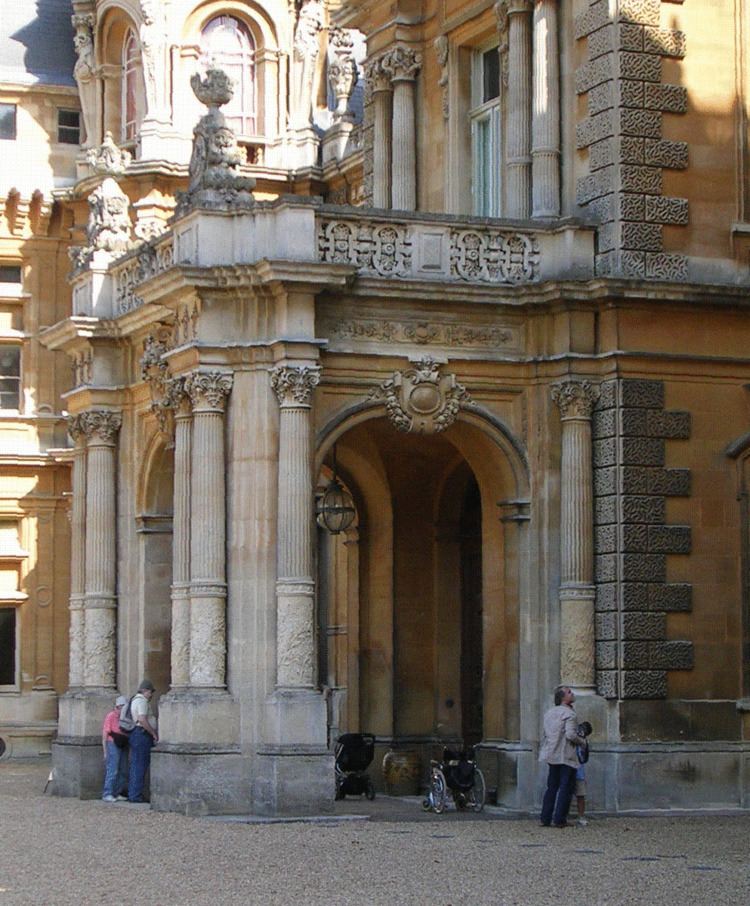 | ||
A porte-cochère (/ˌpɔːrt koʊˈʃɛr/), coach gate or carriage porch is a porch- or portico-like structure at a main or secondary entrance to a building through which a horse and carriage (or motor vehicle) can pass in order for the occupants to alight under cover, protected from the weather.
In modern usage, portes-cochère are still used on some types of buildings such as major public buildings and hotels, where they provide pick-up and drop-off space, for example for dignitaries, taxis and buses.
History
The porte-cochère was a feature of many late 18th- and 19th-century mansions and public buildings. Well-known examples are at Buckingham Palace in London and at the White House in Washington, D.C.
Today a porte-cochère is often constructed at the entrance to public buildings such as churches, hotels, health facilities, homes, and schools where people are delivered by other drivers. Portes-cochère differ from carports in which vehicles are parked; at a porte-cochère the vehicle can pass through, stopping for passengers to board or alight.
At the foot of the porte-cochère there are often guard stones, which act as protective bollards to prevent vehicles from damaging the structure.
